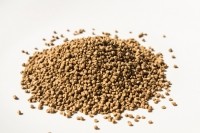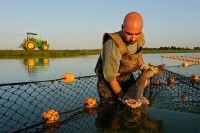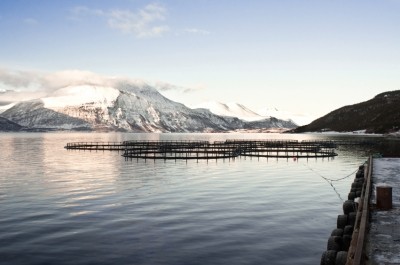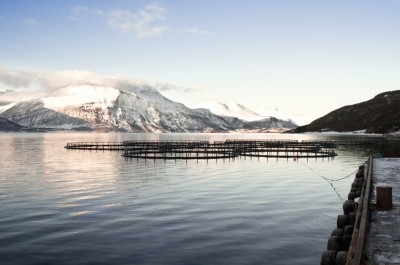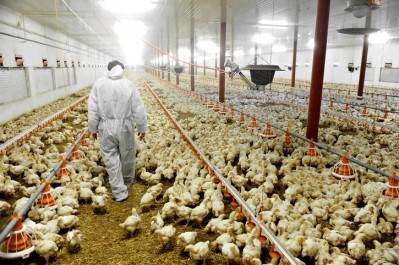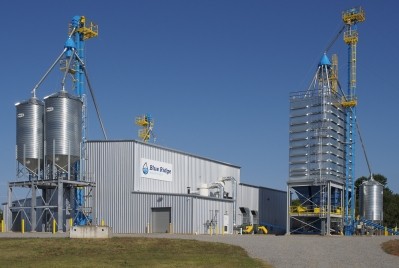Is feed the sustainability story the aquaculture sector should be telling?
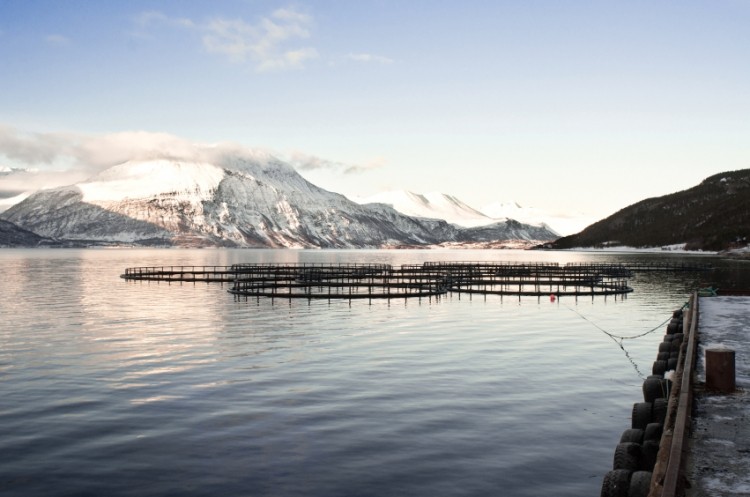
But how much of that bashing can be justified today?
We decided to talk to a leading Rabobank industry analyst and a representative of IFFO to get their informed insight on aquaculture’s credentials regarding responsible production.
Gorjan Nikolik, associate director animal protein, in Rabobank’s food and agribusiness research and advisory, said aquaculture has received a fair amount of bad press over the years on perceived failures in environmental, labor and responsible production but a lot of that needs to be debunked.
“And this may sound somewhat paradoxical, but aqua feed I reckon, while one of the components that has been highly critiqued, can be the key in the fed aquaculture sector’s sustainability strategy.
“It has to be stressed that aquaculture is an extremely efficient protein conversion machine – if you look at it in the broadest sense, anywhere from 25 to 40 million metric tons (Mt) of feed [plant proteins and marine raw materials] is used globally in fish and crustacean farming to provide around 10 to 15% of world meat consumption.
“Livestock production, on the other hand, needs around 600 to 800m Mt of feed. So that is a clear indicator of the FCR of farmed fish, which averages around 1.3 [The FCR of chicken is generally seen as 1.8 and that of pigs 2.63.].”
Dialogue with consumers
That low FCR shows how efficient fish an animal is in retaining the protein and energy from the feed and converting it into food for humans and this is something the aquaculture sector should be pressing home to consumers, said Nikolik.
“The criticism of aquaculture stems a lot from studies carried out in the 1980s and 1990s looking at the ratio of anchoveta – 4, 5, or 6 kilos of anchoveta to produce 1kg of farmed salmon - this attracted a lot of media and NGO attention, particularly as you had a strong emotional reaction to this from affluent western consumers of salmon, bream and shrimp with concerns over the environment and sustainability high on their agenda.
“But the production model has changed dramatically today, with 50% of pelagic fish going towards human food consumption and 50% towards marine ingredients production; more by-products are also being used.
“FCR has dropped over all species. Mortality rates are better, and, significantly, the inclusion rates of marine ingredients has decreased dramatically – from 60% to 25% in salmon, for example.
“Also, Peru, [with its anchovy supply representing 40% of globally traded fishmeal supply] has moved [June 2008] from an Olympic fishing system to quotas which is based on marine science, improving things substantially from a responsible production point of view,” continued Nikolik.
So, he said, the industry is going in the right direction, and criticism based on past parameters no longer stands up to scrutiny. “But public opinion has not caught up,” said the analyst.
Neil Auchterlonie, IFFO technical director, agreed fishmeal has gone from being a commodity to a strategic ingredient for use in hatchery diets, in the transition from freshwater to marine for salmon or in finishing diets.
He said there is general recognition that its high value nutritional properties (with associated cost) and the expansion of aquaculture production globally means that fishmeal will remain an important component of the industry.
“Fishmeal will continue to be a key ingredient for aqua feed going forward due to the high performance it provides. But inclusion levels evidently had to go down with the fast growth in aquaculture and finite supplies of marine ingredients; feed manufacturers have invested a lot in feed formulation R&D to utilize annual supplies of marine ingredients optimally,” said Auchterlonie.
Basket of ingredients
Both commentators said there is plenty of room for innovators, like methane gas to protein suppliers and insect meal and microalgae protein and oil producers, to add to the aqua feed basket of ingredients. “Such alternative protein sources can supplement fishmeal use, bring down inclusion levels even further and help raise the bar in terms of sustainability for the sector; of course it also comes down to an issue of scale and volumes as to how much inroads such novel proteins can make,” said Nikolik.
“We are all in this together; given the scale of aquaculture production, feed ingredients have to come from multiple sources,” said Auchterlonie, but he added that alternative proteins will never be able to fully replace fishmeal and fish oil supplies due to their nutritional profile, and the customization of feeds in aquaculture and in pig and poultry diets will continue to require fishmeal and fish oil.
Labor issues
On the issue of slave labor in the South East Asian shrimp feed supply chain, which generated a huge number of media headlines in 2014, Nikolik said the vessels in question really only represent a miniscule part of global fishmeal production.
However, Auchterlonie said the IFFO takes the slave labor problem extremely seriously, and the current development of the IFFO RS version 2.0 has also considered social and welfare criteria for fishmeal manufacture.
“Version 2 of the IFFO RS standard is now open for consultation and we anticipate something like 45% of global fishmeal production will be certified in 2016 which is a comparatively high level of certification for a feed ingredient," he said.
Currently around 1.9 million tons of fishmeal production is certified as either IFFO RS or from Marine Stewardship Council (MSC) certified fisheries - this represents about 40% of global production, said the IFFO.
But just because fishmeal factories or boats are not certified it does not mean sustainable management practices are not applied, stressed Auchterlonie. "Fisheries may well be sustainable even without the application of third party certification schemes, and the track record for the marine ingredients industry is very good in developing sustainable practices despite much of the criticism that has been received. Certification schemes do provide an independently validated check and there is some value in that, but that does not imply that those fisheries that are not certified are not sustainable," he added.
The key objectives for the Version 2 of the IFFO RS are as follows:
- To continue to meet the objectives set in the development of Version 1 of the IFFO RS Standard
- To enhance the IFFO RS Approval Criteria for whole fish used as a raw material for IFFO RS compliant production to promote more responsible fisheries management
- To promote more efficient marine ingredients production practices to reduce the environmental impact of the fishmeal and fish oil manufacturing process
- To promote and create improved social and welfare benefits for all workers employed within the marine ingredients manufacturing sector
- To develop this version of the standard to be in compliance with the ISEAL Code of Practice for Setting Social and Environmental Standard v5.0
By-product use increasing
A report the IFFO carried out by the University of Stirling, showed an overall rise in the amount of fishmeal and fish oil being obtained from by-products, noting that 33% of the world’s annual fishmeal production has come from trimmings in recent years.
The continued growth of aquaculture will produce an increased volume of raw material for fishmeal manufacture through the availability of more by-product, predicted the authors.
The review also forecast that whole fish will be increasingly directed to direct human consumption.
The study estimated that globally there are an additional 11.7m tons produced in processing plants which are currently not collected for marine ingredient production. Asia, excluding China, at 4.6m tons, is the area where there is the biggest potential for further production, and, even in Europe, they estimated there is an additional 0.6m tons that could be used for fishmeal and fish oil production.
“With the growth of the middle classes in Asia, there may be changes in eating patterns that could result in more centralized processing of aquaculture and fisheries products, resulting in improved opportunities for collection in the future,” said Auchterlonie.
The authors’ model also indicates that, in 10 years, the volume of by-product raw material going for reduction will exceed that of whole fish, similar to predictions by the FAO.
They forecast that wild caught and aquaculture by-products will make up about 50% each of the supply. “This may well occur earlier in years of El Ñino when the harvests of Peruvian anchovy are greatly reduced,” they said.
“Infrastructural challenges, however, are holding back a lot of by-product use. Fishmeal producers need a centralized sourcing location since there are issues around the logistics and practicalities of collecting some of this material at the current time,” added Auchterlonie.
FeedNavigator is hosting a webinar on 6 October on the pros and cons of protein alternatives like insect meal, microalgae, and single cell bacteria for use in fish and poultry diets. You can REGISTER for the event here.
